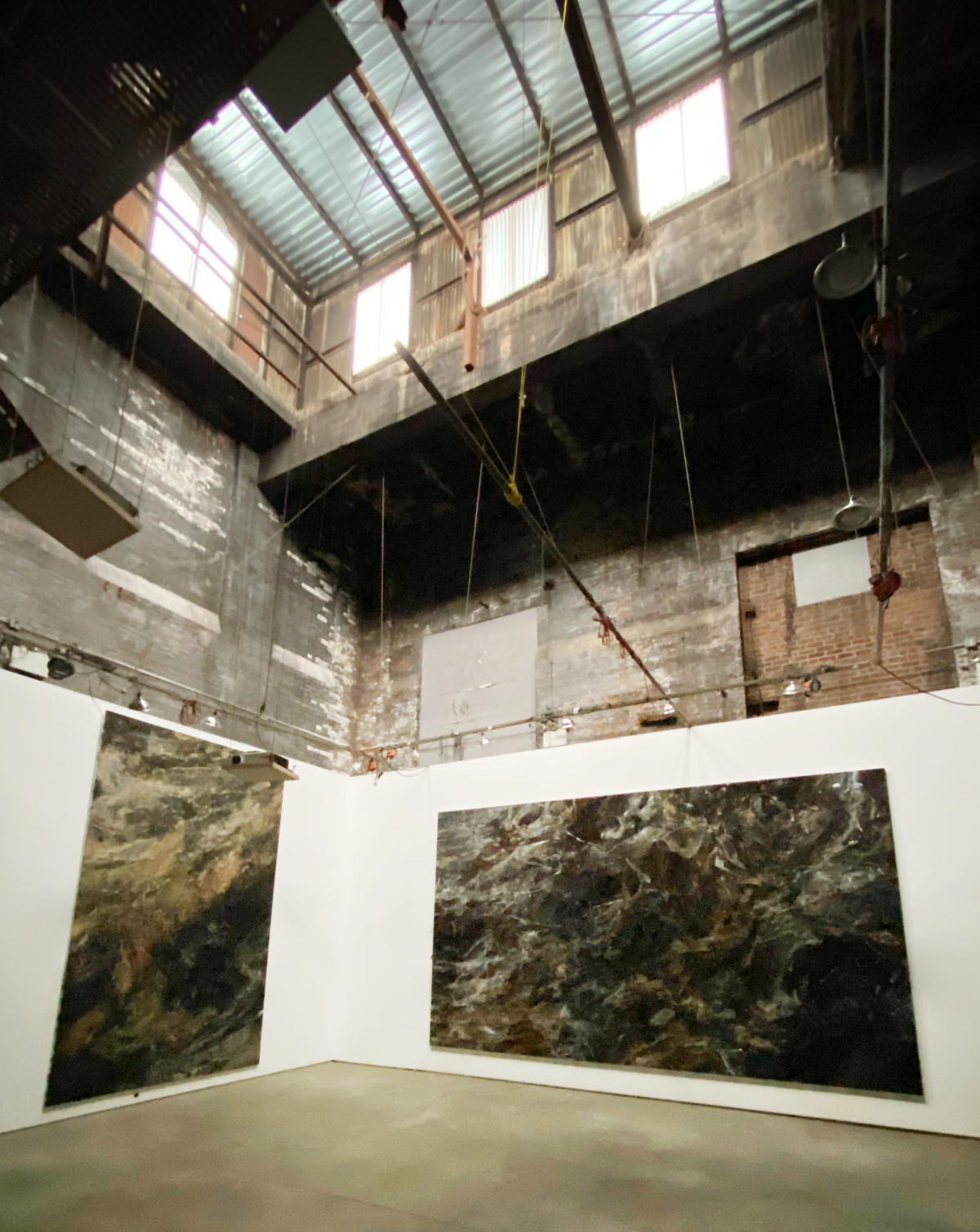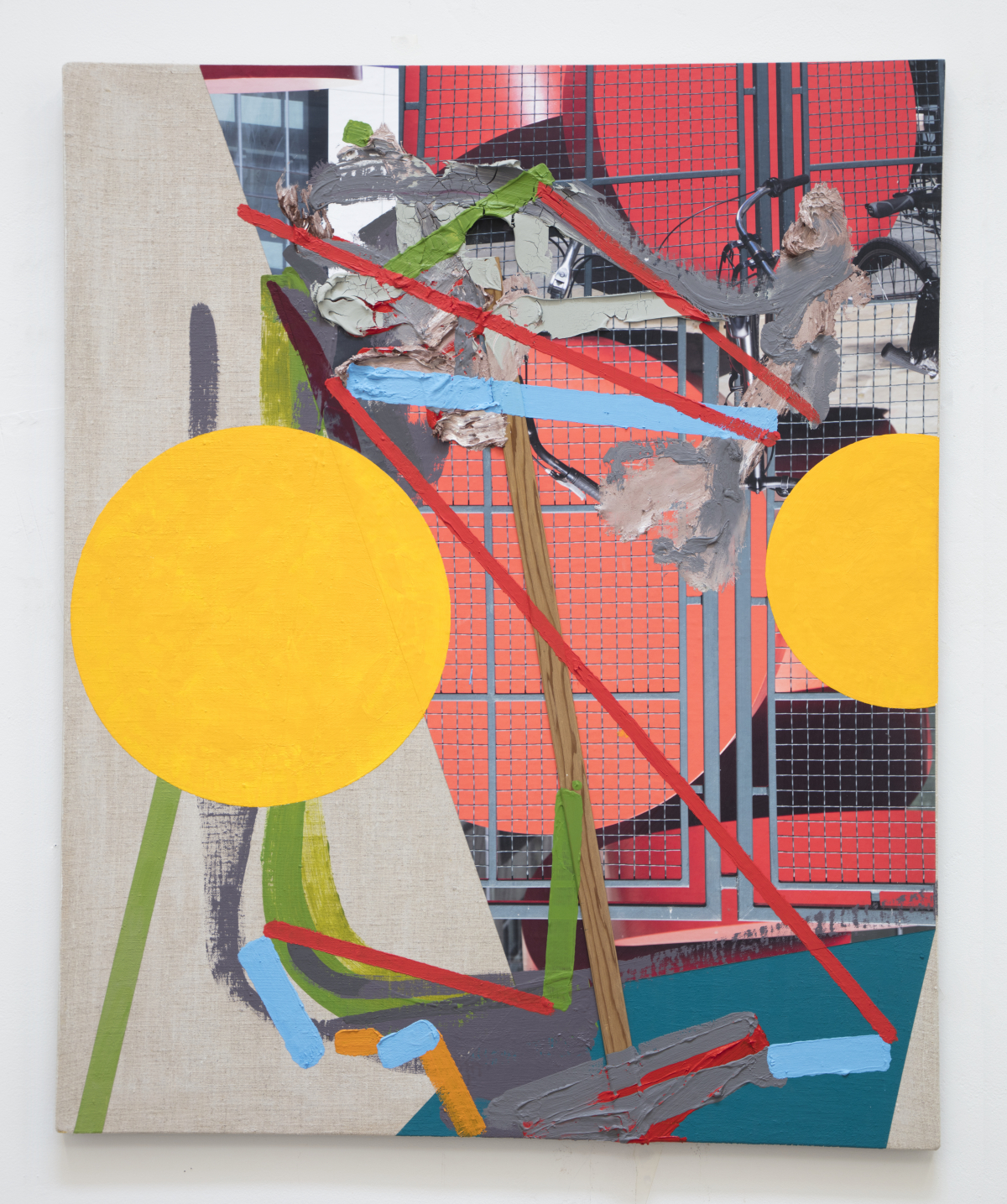
James Hyde Public Sculpture
FREIGHT & VOLUME
November 12th, 2020 - January 10th, 2021
97 Allen Street, New York NY 10002
James Hyde is an artist of big ideas. I got a real sense of this when he curated a show at my petite gallery. The space would not dictate the show. Instead we had 40 artists in weekly rotation. Hyde made his statement. Knowing him as I have for the past 40 years, I wasn't surprised then, nor am I now with his recent work of two large scale shows. During his career he has been awarded a Guggenheim, the Pollock-Krasner Grant, the Joan-Mitchell Foundation Fellowship, and the New York State CAPS Grant. He is also well represented in museums and private collections. Again, knowing him, this is no surprise. He pursued his art not only with passion and rigor, but with a scholarship of art history. In this Q and A we will catch up with the artist, his recent work and what's next,
Kathleen Cullen: Jim let's start with the show at the Elm Foundation (Boiler Room). You talk about the work being influenced by an Italian painter Alessandro Magnasco (1667-1749) What made this come about?
James Hyde: With these paintings at the Boiler, it wasn't so much I was influenced by Magnasco -- I chose him. I first saw Magnasco's paintings over 20 years ago. There was a big museum exhibition of his work in Milan where I was working on a show. At that point, maybe he chose me, because I wasn't going to see the exhibit because his dark Rococo sensibility wasn't my type of work; seeing it in person was convincing, however. Over the years, I’ve enjoying seeing his paintings in a variety of museums -- it's been like bumping into an old friend.
The works in the Boiler entailed taking a high-resolution photograph of a detail from a couple Magnasco paintings (the paintings are at the National Gallery in DC). The details in these paintings are of Magnasco’s stormy seas. The details are then enlarged and printed on billboard material. These giant photos get covered with many layers of glazes with metallic pigments, glass beads, ground minerals and shredded tire rubber, to become finished works. I've been working on this series of "Magnascos" for seven years, but these four paintings -- painted mostly in the Boiler -- are the largest. The reason for choosing Magnasco to form the basis of paintings has as much to do with how different his sensibility is to mine, as it does with similarities. I wanted there to be a gulf to bridge. I also chose him because, despite being a terrific painter, he’s not part of the “great master” canon. I wanted to advertise him, even as I was over painting the photos of his painting.
KC: Let's move on to another series in the show titled Public Sculpture at Freight & Volume. How did this come about and what inspired the work?
JH: The public sculpture paintings look very different than the Magnasco paintings, but they come out of a related thinking and painting process. It's the idea of using photography as a type of drawing for making paintings. As well, photography is a type of architecture or context for my painting to take place. For me, using photography as a base for painting abstractly allows it to break out of the confines of the studio and engage with the world.
I began taking pictures of Modernist public sculpture in Mexico City as a way of recording these often neglected sculptures in the urban environment. The sculptures seemed forlorn. It was as if their utopic ideals had failed, or rather we had failed them. But the sculptures have humor as much as tragedy. Originally, they were designed to dominate their context, but now having become mundane, the locale of the sculptures dominates them, so there’s a bit of slapstick going on. I continued to photograph sculptures and their environment when I returned to New York it seemed North American public sculptures were buffeted by the same conditions.

I don’t know why, but after I made prints of the sculpture pictures, I began cutting them up and arranging them in off-kilter combinations -- not unlike performing exquisite corpse drawings. Turning the photos into collage elements made the photos more physical -- sculptural, even. The tragicomic vibe of public sculptures seemed to allow for play with materials and color. I felt, with this group, I could make a variety of work with a variety of painting language. Painting each one felt like its own invention.
KC: How does this recent work link to your very impressive body of work, from the 80s, the 90s up to the most recent work?
JH: At a certain age -- and I'm definitely there -- one starts to realize that there are just a few simple things that all the work comes out of, no matter how different it looks. For me it’s primarily two things. Materiality is central to everything I've done, whether it's using styrofoam for fresco panels, slathering axel grease in glass boxes or seeing how photographs can frame and be objects themselves; as well as how photographs interact with other objects. I think it's clear both my Public Sculptures and my Magnascos are physical, material paintings. The other thing is more aspirational -- I've always thought about the possibilities of painting. That's what abstract painting means to me. I want it to find a new or different perspective. And I like exploring potential ideas and materials. I'm not interested in style -- for me style, is a result, not a goal. As such my work ends up stylistically diverse, but I think there is a common sense of materiality and adventure in all the groups of paintings I’ve done over the years
KC: You have had great acceptance in the art world, while at the same time created opportunities for yourself. This is not something creative people find easy. Describe your process for doing this? What advice would you give other artists?
JH: I'd advise that the reward for hard work in the arts is more hard work. Love your studio, not your career. Visit galleries and museums. And don’t forget to vote.
KC: Of course I want to know what coming next, even if you are not ready to talk about it, especially if you are not ready to talk about it! What new big ideas are coming?
JH: A couple months ago I was cleaning out my storage and found a cache of styrofoam panels I only half remembered stashing away. Many of these panels are prepped and ready to be frescoed! I haven't made frescos for 15 years so it will be interesting revisiting this line of painting. At present, I’m continuing on the Public Sculpture group and I’m exploring enlarging the scale -- that’s interesting because painting at one size doesn’t mean it will work in a larger format -- I’ve done one I like but we’ll see if more progress. I've got a show booked in Paris next year and these could form its core. In the meantime, as I work on these paintings I try to keep open to new experiences and ways of working.

KC: Thanks Jim for talking with us. I just want to close with one more compliment. Not only is James Hyde a prodigious artist, he is a prodigious art fan and scholar. He not only works to get his work seen, he works to get the work of other artists seen. His contributions are many as are the number of artists he has helped to launch and revive.
JH: Thank you, Kathleen for your questions here. But more importantly for the years you've logged in the art world encouraging so many of us! Also for being a generous collaborator.
Four Magnascos at the Boiler, New Paintings by James Hyde. On view until January 3rd.
The Boiler is open to the public on Saturday and by appointment: 191 North 14th St, Brooklyn NY 11249 www.elmfoundation.art
